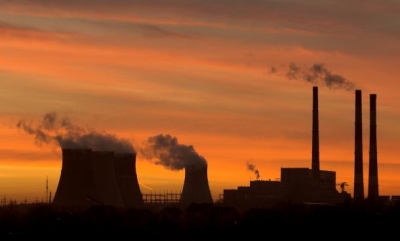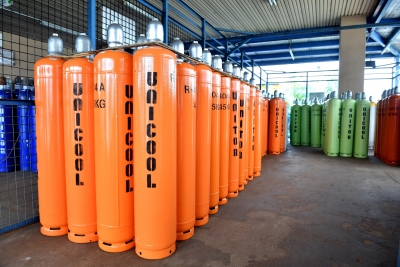
Atmospheric gases that absorb infrared radiation and trap heat are called greenhouse gases. These gases let sunlight pass through the atmosphere and prevent the heat from the sunlight from leaving the atmosphere – just like a greenhouse. The main greenhouse gases are water vapour, methane, carbon dioxide, ozone, nitrous oxide and chlorofluorocarbons. While some amount of greenhouse gases in the atmosphere is required to keep the earth habitable, too much, induced by human activity is bad.
Greenhouse gases are gases that can trap heat. They get their name from greenhouses. A greenhouse is full of windows that let in sunlight. That sunlight creates warmth. The big trick of a greenhouse is that it doesn’t let that warmth escape.
That’s exactly how greenhouse gases act. They let sunlight pass through the atmosphere, but they prevent the heat that the sunlight brings from leaving the atmosphere. Overall, greenhouse gases are a good thing. Without them, our planet would be too cold, and life as we know it would not exist. But there can be too much of a good thing. Scientists are worried that human activities are adding too much of these gases to the atmosphere.
Human activities since the beginning of the Industrial Revolution (around 1750) have increased the atmospheric concentration of carbon dioxide by almost 50%, from 280 ppm in 1750 to 419 ppm in 2021. The last time the atmospheric concentration of carbon dioxide was this high was over 3 million years ago. This increase has occurred despite the absorption of more than half of the emissions by various natural carbon sinks in the carbon cycle.
At current greenhouse gas emission rates, temperatures could increase by 2 °C (3.6 °F), which the United Nations’ Intergovernmental Panel on Climate Change (IPCC) says is the upper limit to avoid “dangerous” levels, by 2050. The vast majority of anthropogenic carbon dioxide emissions come from combustion of fossil fuels, principally coal, petroleum (including oil) and natural gas, with additional contributions from cement manufacturing, fertilizer production, deforestation and other changes in land use.
Credit : Climate kids
Picture Credit : Google

